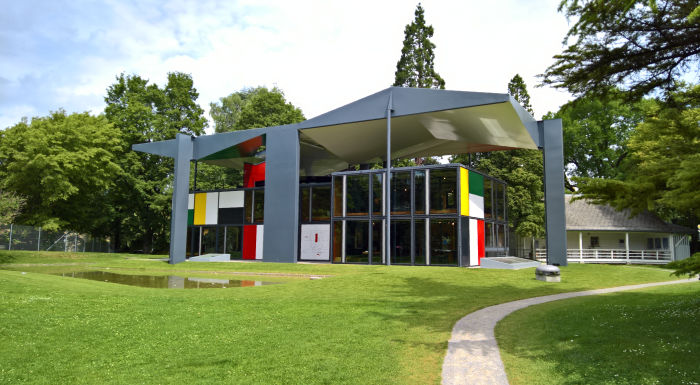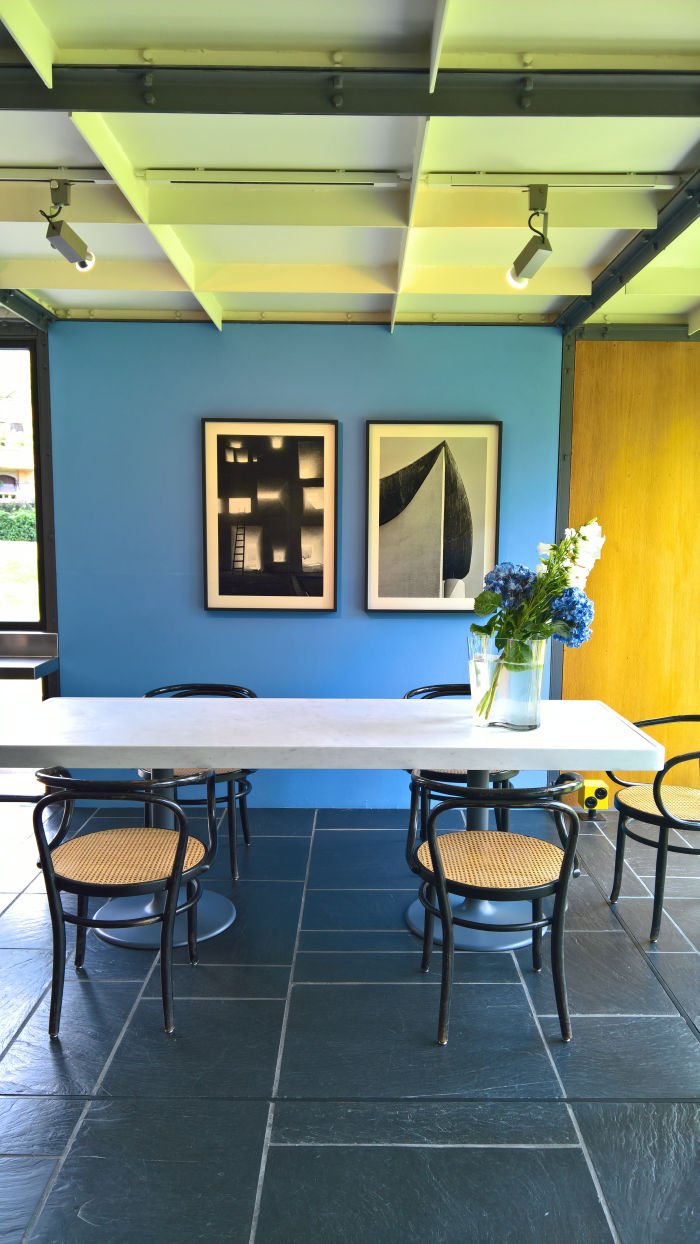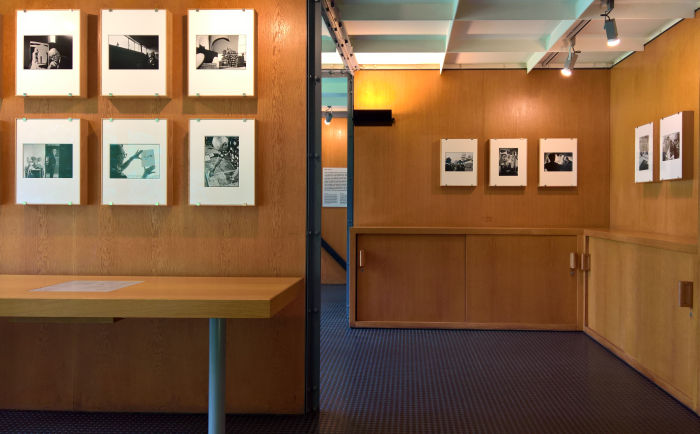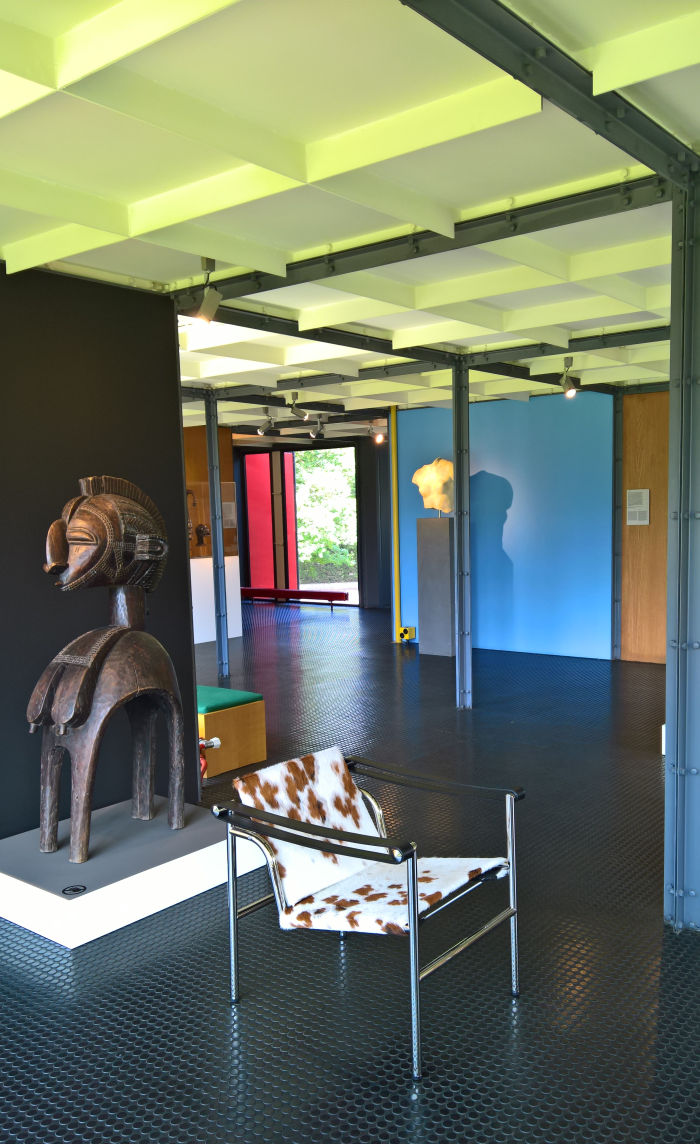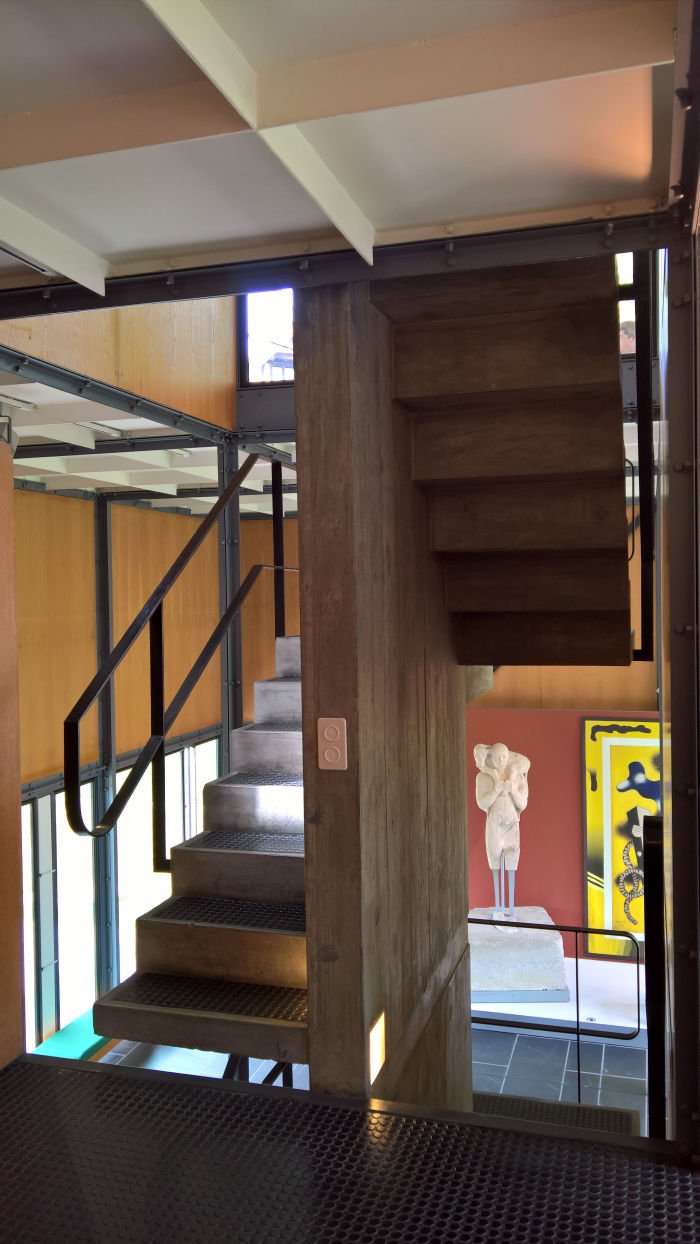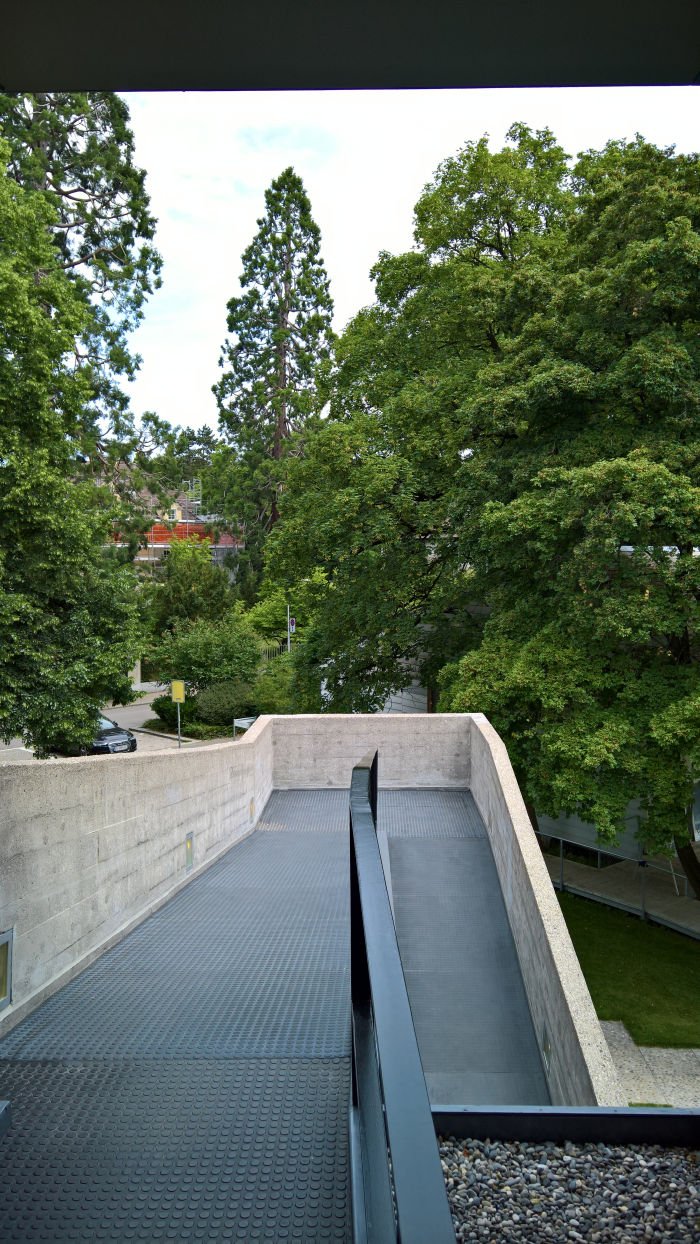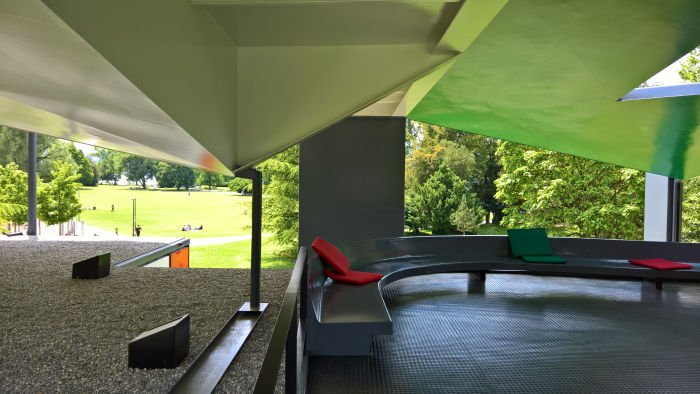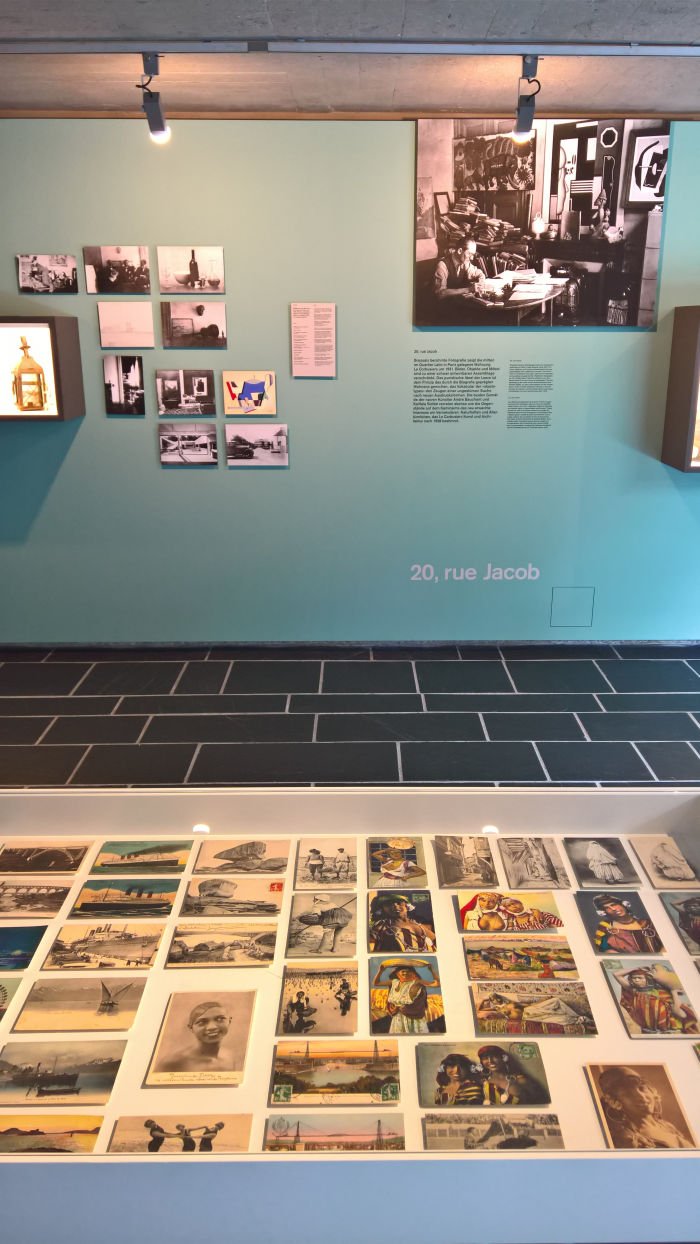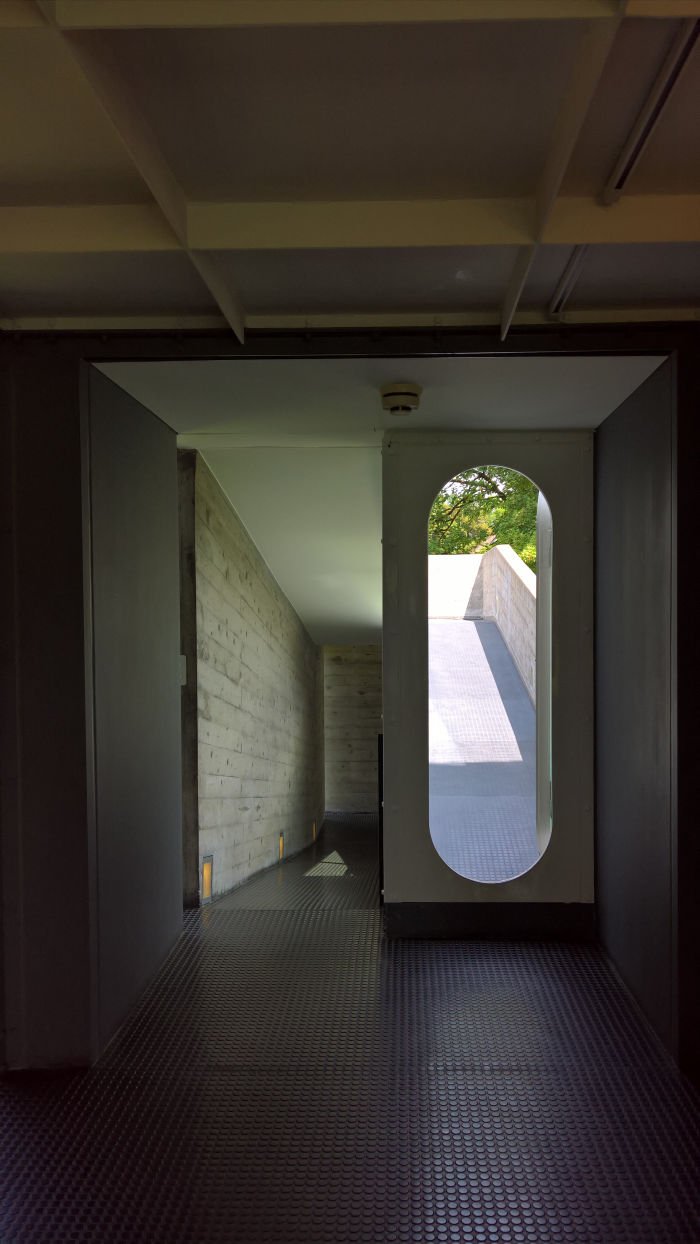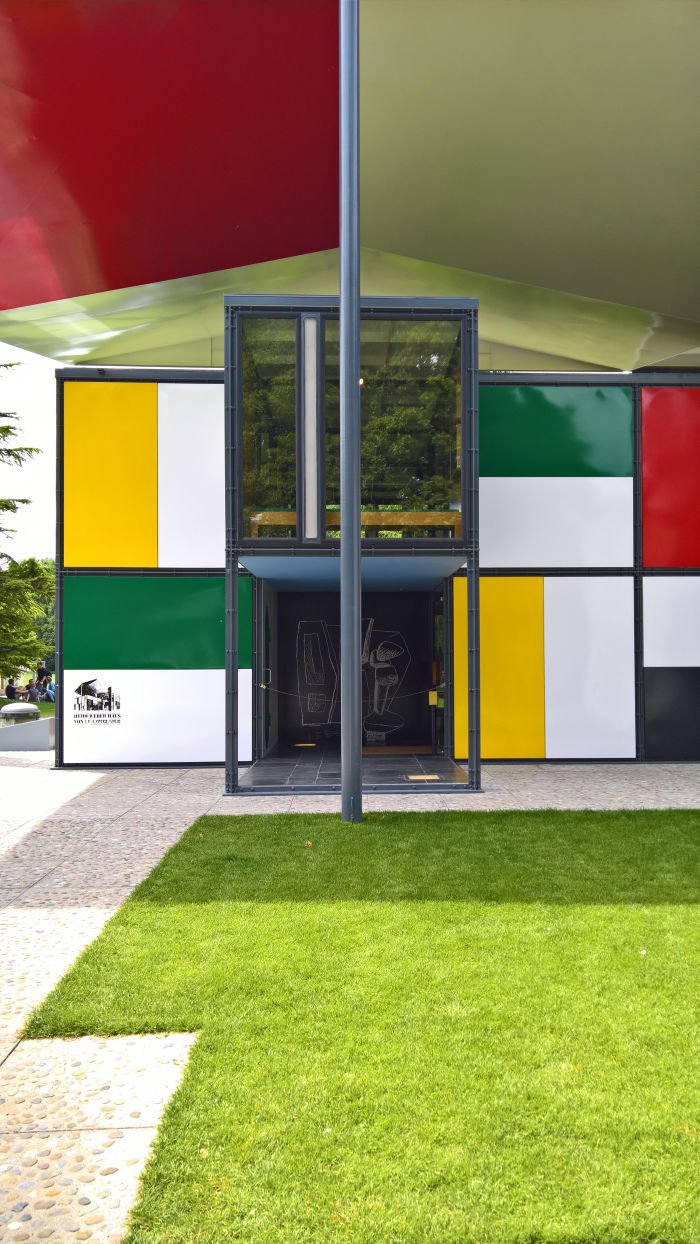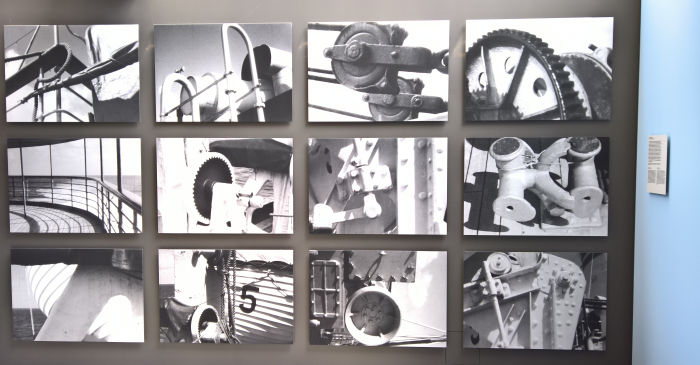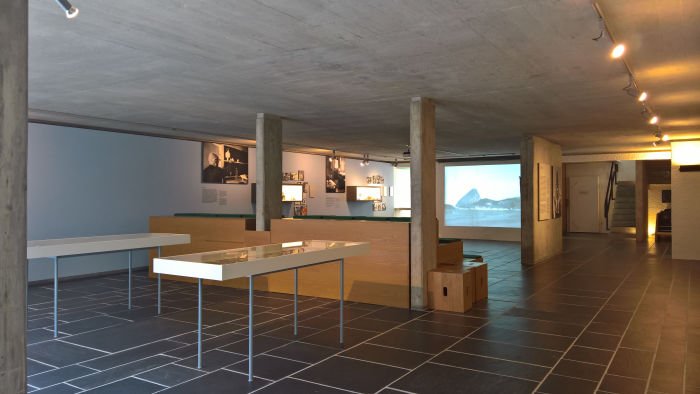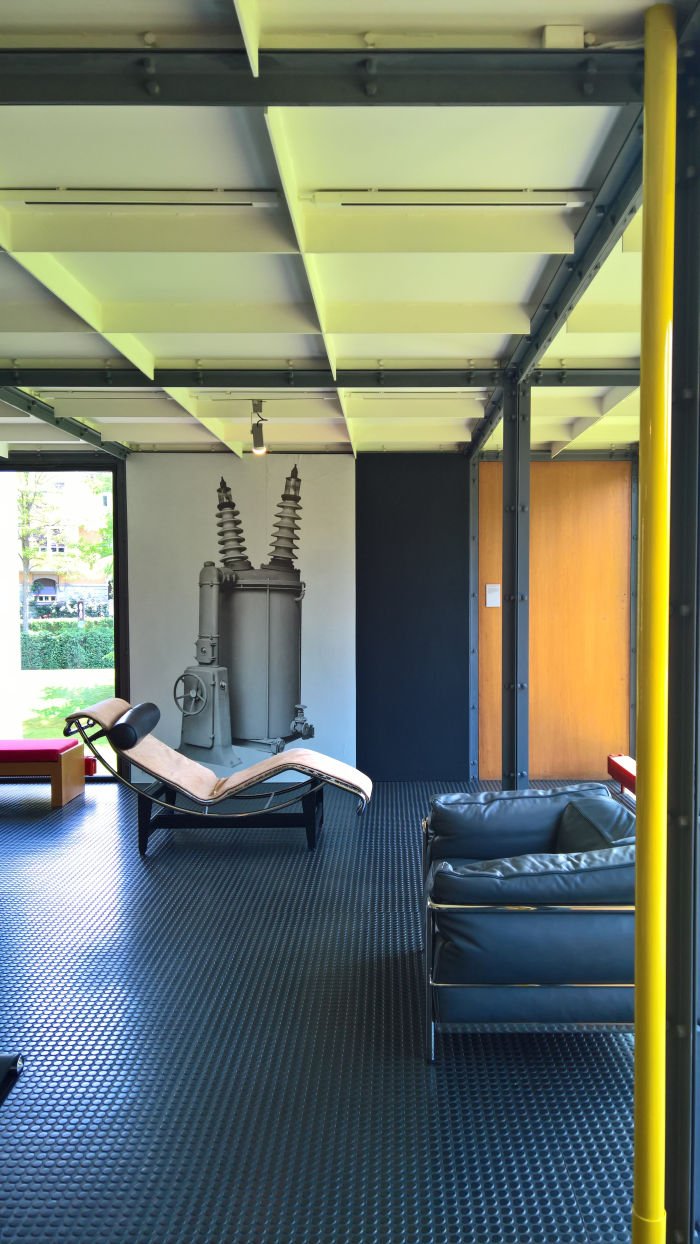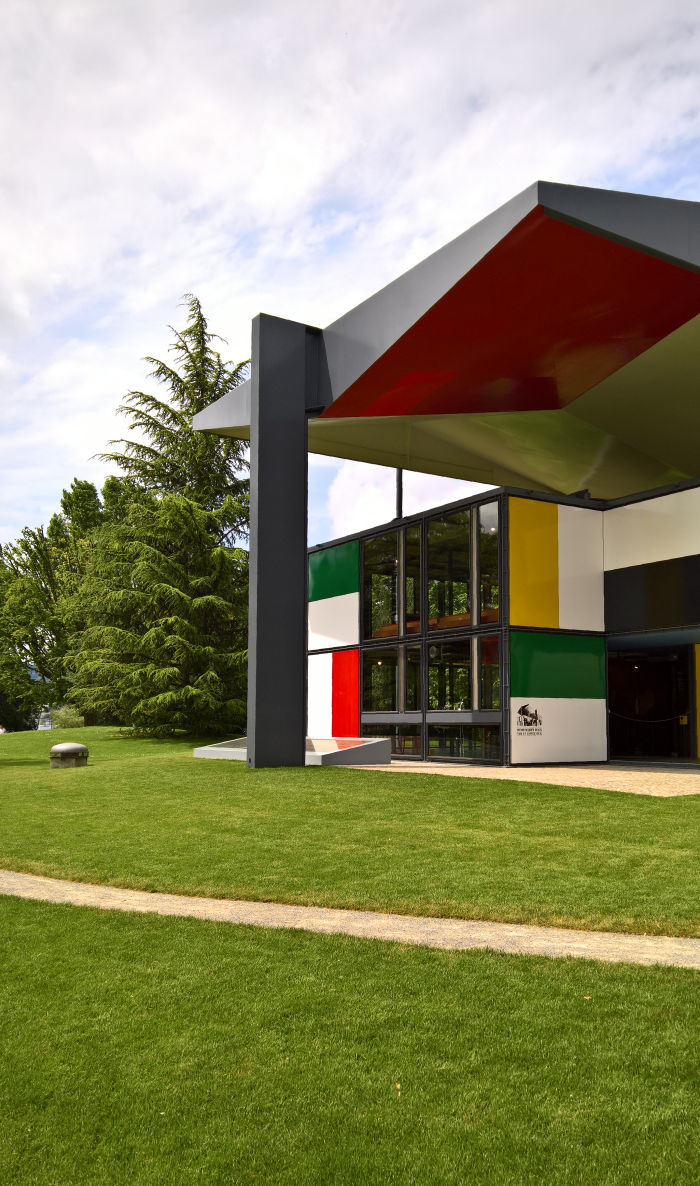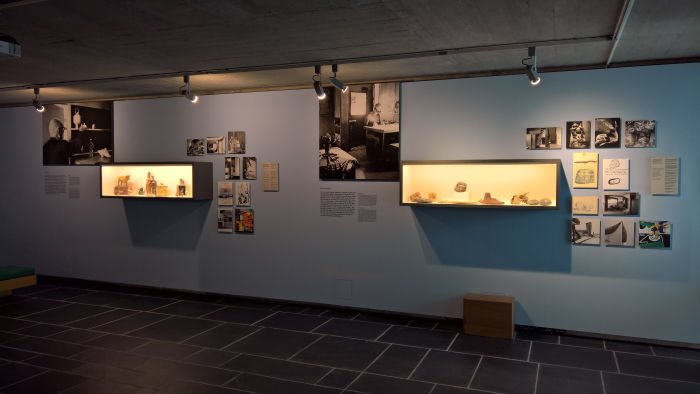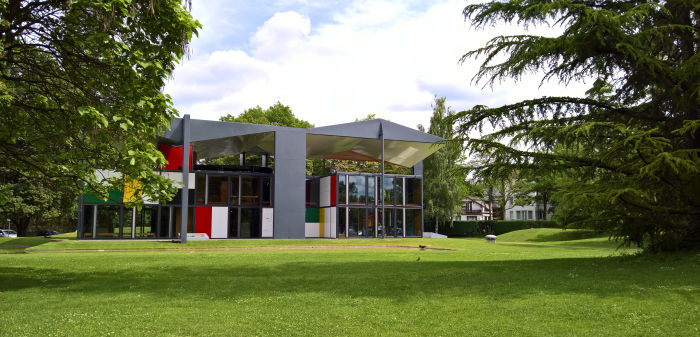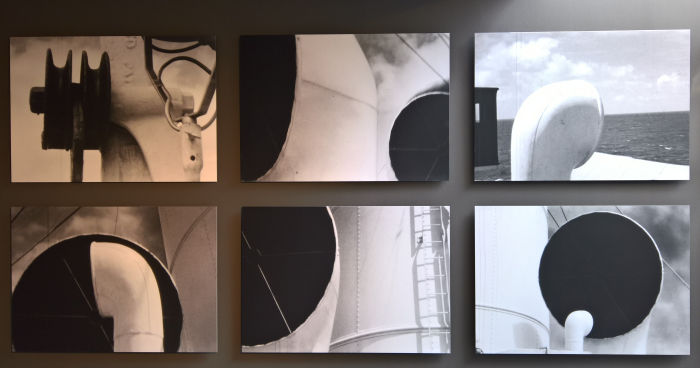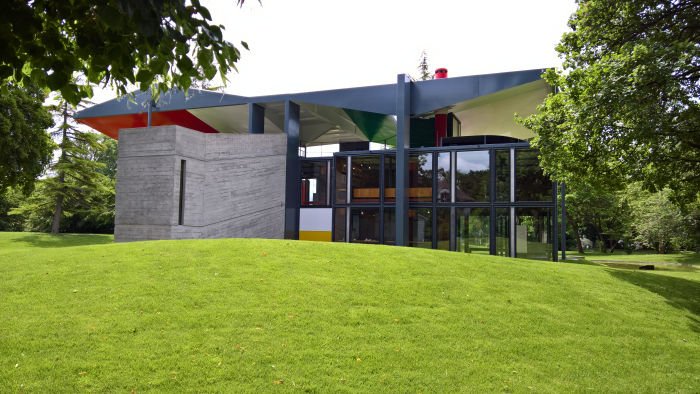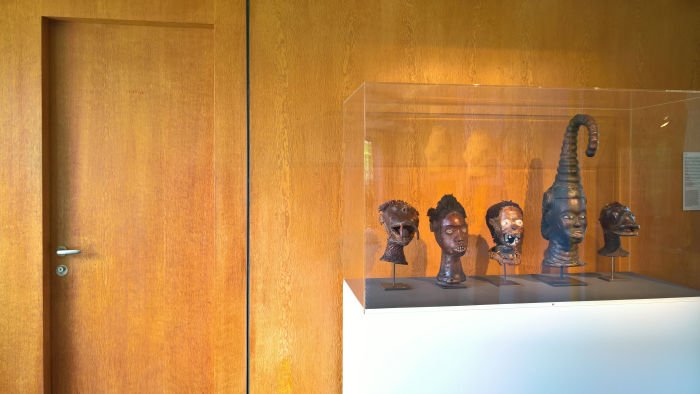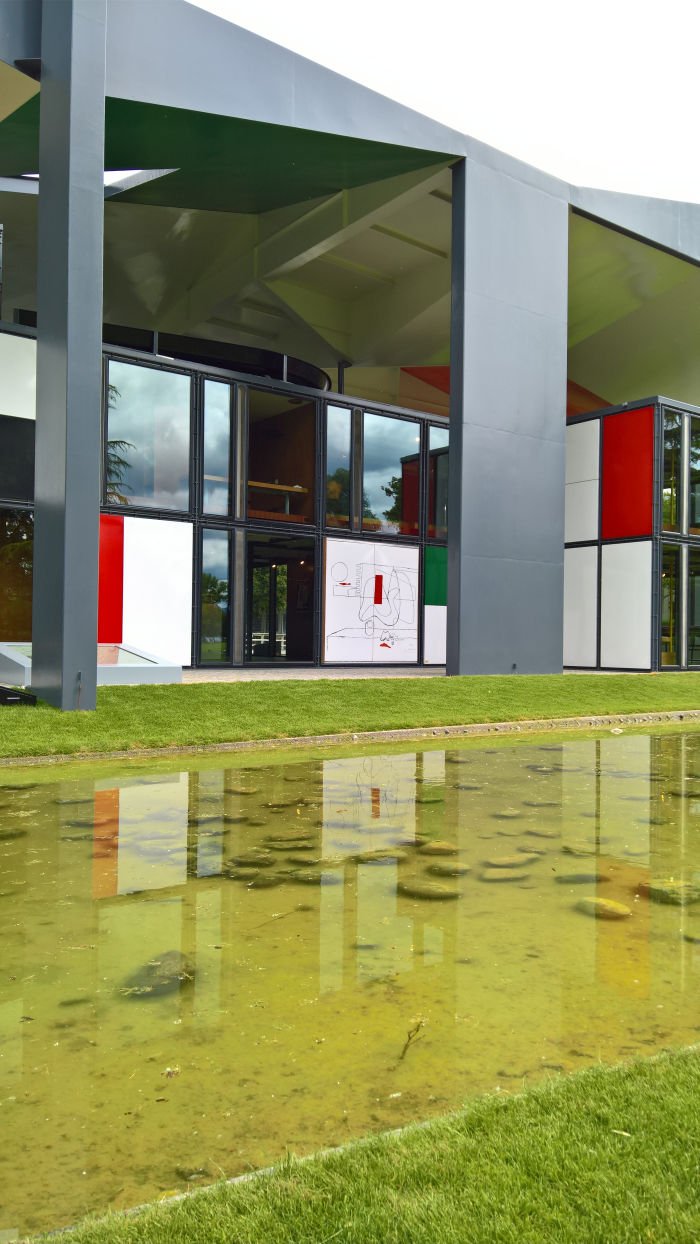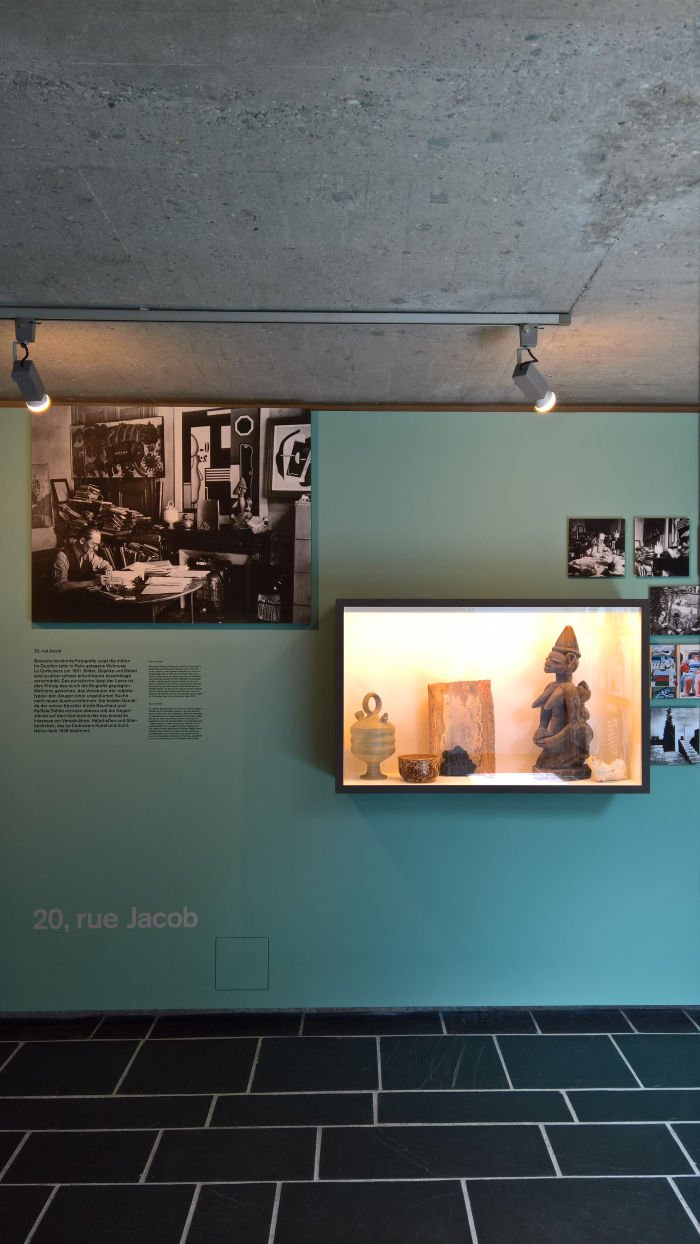"This house is a work by Le Corbusier" announces a yellow and white sign on the edge of the Zürichhorn park, "I commissioned it in his honour, and as a location from which to spread his ideas amongst a wider public"
With the exhibition Mon univers the Pavillon Le Corbusier Zürich attempt to do just that via an exploration of the Swiss architect, artist, designer, author, et al, through a very specific filter: that which he collected.
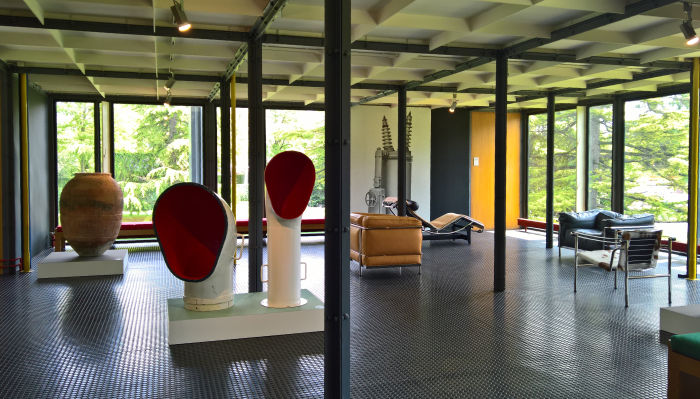
In 1960 the Zürich gallerist Heidi Weber proposed to Le Corbusier, to whose (and Jeanneret/Perriand's) steel tube furniture she, at that time, held the exclusive production and distribution rights, the construction of a new museum in Zürich: a museum by Le Corbusier for Le Corbusier. "Please understand" replied Le Corbusier, "I'm not prepared to do anything more for the Swiss; they have never been particularly nice to me". Heidi Weber insisted. Le Corbusier assented. And in May 1964 construction of La Maison d‘Homme began ... and came to an abrupt halt in August 1965 with Le Corbusier's death while swimming at Roquebrune-Cap-Martin. Taking on the responsibility herself Heidi Weber oversaw the final stages of construction and on July 1967 the Heidi Weber Museum – Centre Le Corbusier was opened in memory of Le Corbusier, and as not only a space for exhibiting Le Corbusier's work, but, as fate would have it, Le Corbusier's last (architectural) work.
Planned and constructed on the basis of Le Corbusier's 1950s Brevet 226 x 226 x 226 modular construction system, the only realisation of that system, the Zürich pavilion is also the only glass and steel frame construction realised by Le Corbusier; does however feature several aspects oft used by Le Corbusier including a strict quadratic geometry, stilts to create free-floating elements, prominent colour and exposed concrete. For all the steel and glass there is also an awful lot of exposed concrete. And while having something unquestionably, adamantly, formal, it is also a very playful work, with its portal-esque doors, galley-esque kitchen and steep, narrow stairwells, it has the unmistakable feeling of a ship; if you will an ironic luxury liner for a landlocked nation, or a pleasure steamer harboured on the banks of the Zürichsee amongst a flotilla of Art Nouveau villas. And a work which when compared with Le Corbusier's first building, the Art Nouveau Villa Fallet in his native La Chaux-de-Fonds, and which in many regards could itself have stood on that site in Zürich, is a work that also very neatly surmises the voyage Charles-Édouard Jeanneret took to Le Corbusier.
In 2014 Heidi Weber's 50 year leasehold on that particular corner of the Zürichhorn park expired and the ground, complete with building, returned to Zürich city authority. Following renovations and upgrades the Pavillon Le Corbusier (re-)opened in May 2019 as a dépendance of the Zürcher Museum für Gestaltung. The inaugural temporary exhibition being Mon univers.
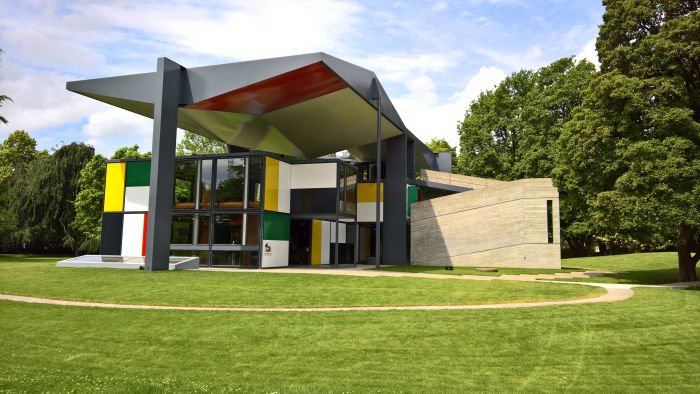
That architects are popularly only known for the buildings they build, and that most architects build only relatively few, most of us know next to nothing about any given architect. Or put another way, the popular image of any given architect is a reflection of their built works, and therefore very restrictive. Something intensified in the case of Le Corbusier by the surfeit of publicly available images of the man, a meagre handful existing and which invariably portray him as a serious, stern, saturnine looking man in round glasses. Le Corbusier holding a vase on his head like a newly crowned champion sportsman presenting their trophy to the media, doesn't fit into such an image. Even if the round glasses are also there.
And appropriately it is just such an image that greets the visitor to Mon univers; promising as it does that what follows will similarly present an alternative view of Le Corbusier, one more abundant than his buildings alone could ever provide.
The vase in question was acquired by Le Corbusier in Serbia in 1911 during an elongated study tour through the contemporary Hungary, Balkans, Greece and Turkey, one of numerous study tours the young, then, Charles-Édouard Jeanneret, undertook before the war, and tours which played important roles in shaping his view of the world, and including his 1910/11 tour through Germany at the behest of La Chaux-de-Fonds' École d’Art and which not only saw him meet many of the leading German architects and designers of the period but also saw him spend some five months working for Peter Behrens in Babelsberg, alongside two young architects by the names of Gropius and Mies van der Rohe.
And a 1911 voyage d'Orient which not only opens the exhibition Mons univers but in many regards the Le Corbusier univers discussed in Mons univers, for all through the varied, and numerous, objects of folk art Charles-Édouard Jeanneret collected on that tour and which comprise a central vein of Le Corbusier's extensive collection of man-made and natural objects, artefacts of a life of rich curiosity, and a unruly mishmash which, as the exhibition explains, formed the basis of the recherche patiente, silent research, that Le Corbusier undertook in his atelier and via which he continually developed and evolved his formal understandings.
And objects presented and discussed in Mon univers in the course of six brief chapters: be that the Object-types, anonymous, unassumingly every day objects such as glasses, bottles, pipes that featured in so many of his paintings and helped inform his understanding of not only form but of decoration; cones, shells, driftwood et al that usher in more organic forms to his work and an understanding that objects, forms, can stimulate emotion, can be the basis of emotional associations; or a selection of the objects collected on his voyage d'Orient including an Hungarian wine jug, a Turkish pitcher, or a brown Serbian vase that doubles neatly as a sports trophy, and objects which in their archetypal nature remind us, and one presumes reminded Le Corbusier, that the form/function relationship is very simple and once established needn't be all to deeply reconsidered. The complex decoration of several of the folk art objects reminding that in days of yore decoration was often more important than the function, be that decoration for ceremonial, ritual, tribal reasons, or simply to underscore the (perceived) value of the object. A value that through the work of Le Corbusier, amongst many, many, many others, would be transferred to the function.
The various displayed objects are also presented in sketches and paintings by Le Corbusier which indicate how he visualised them, and thereby how they influenced him, and by photographs that (a) place the displayed objects as items with which Le Corbusier lived on a daily basis, objects which he continually had in front of him, allowing him to continually consider then afresh and anew, and (b) place the displayed objects in context, through more general photographs of Le Corbusier, including one of (possibly) Pierre Jeanneret with (more certainly) Albert Jeanneret, Amédée Ozenfant and Le Corbusier in Le Corbusier's Paris apartment, all smoking pipes while the latter two hold guitars à la a Mariachi band; one of Le Corbusier in 1952 working in his cabin in Roquebrune-Cap-Martin, topless, in shorts and looking for all the world like a pre-hippy downshifter; or one of Le Corbusier on a horse in Bulgaria. Or possibly about to get thrown from a horse in Bulgaria, the arch of the animal's back, akin to that of an adrenalin filled cat, not suggesting either satisfaction or a successful, long-term, partnership. In all the round glasses are also there. If one suspects not for much longer on that June 1911 day in Bulgaria.
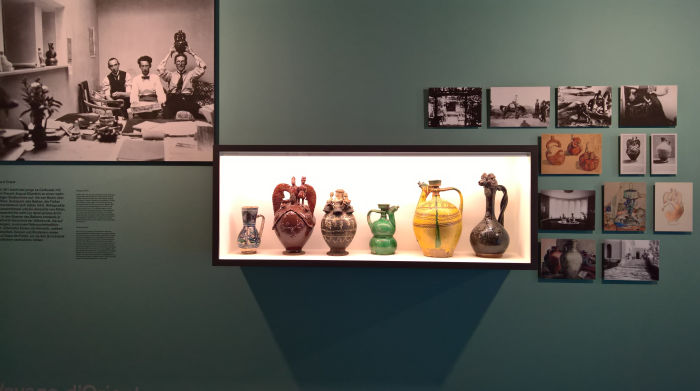
Aside from being a tour through Le Corbusier's collection and collecting Mon univers also takes the visitors to some of the key locations in Le Corbusier's univers, discussing their relevance and importance as it does, including Roquebrune-Cap-Martin on the Côte d’Azur, the bay of Arcachon on the French Atlantic coast, his penthouse apartment in Boulogne-Billancourt on the south-west border of Paris or the flat at 20, rue Jacob in heart of Saint-Germain on Paris's Rive Gauche, where he lived between 1917 and 1934, and where Charles-Édouard Jeanneret became Le Corbusier. And a flat which during those 17 years he clearly never tided. An image from circa 1931 by the French-Romanian photographer Brassaï depicting Le Corbusier sat at an old wooden table, an old wooden table scattered with documents and files, untold further files (more or less) piled, squashed, abandoned in and on the shelves behind him: much like the brutalist nature of many of Le Corbusier's buildings exposes the construction principle, so the brutality of his shelving exposing his filing principle, while the mantelpiece is covered with dust catching ornaments and knick-knacks. And thus not the reduced, clear and structured environment one might expect to find Le Corbusier living and working in. And certainly not in a further photo by Brassaï of Le Corbusier at the same table stroking a cat, his work now sharing the table top with dirty dinner plates. Alone the round glasses confirming it is Le Corbusier.
The objects and photographs are backed up by a presentation of postcards collected by Le Corbusier on his travels and photos taken by Le Corbusier of the Italian steamer Conte Biancamano on which in August 1936 he travelled from Rio de Janeiro to Nice, a steamer which clearly interested and inspired him every bit as much as the vases, driftwood and shells he collected; and photos which lead nicely into wider considerations of Le Corbusier's understandings of the world around him via a selection of items which stand representative for objects of Le Corbusier's study and research, of objects and situations which informed and inspired his work, including a Spanish clay Tinaja pot, a shoulder mask from the Baga people of Guinea, a single pole oil switch from the Swiss electronics company Brown, Boveri & Cie., a collection of ritual West African Ekoi masks, and two ships cowls, cowls which not only refer back to the SS Conte Biancamano but also underscoring that Ionna Vautrin is not the only designer inspired by that particularly mundanely functional object.
Intermixed throughout the presentation one finds photographs by René Burri of Le Corbusier at work, play and rest, artworks by Le Corbusier, and a recreation of a section of the 1935 sales exhibition Les arts dits primitifs, The so-called primitive arts, organised by gallerist Louis Carré and partly staged in Le Corbusier's apartment. And a sale which Le Corbusier used to present some of his collection and art by himself and Fernand Léger alongside the pre-Columbian, African and Greek sculptures and thereby express his view of a parity in creativity, that the new isn't necessarily better than the old, that no one people have a monopoly on cultural expression, but that good is good and remains good despite the passage of time and social and cultural evolutions.
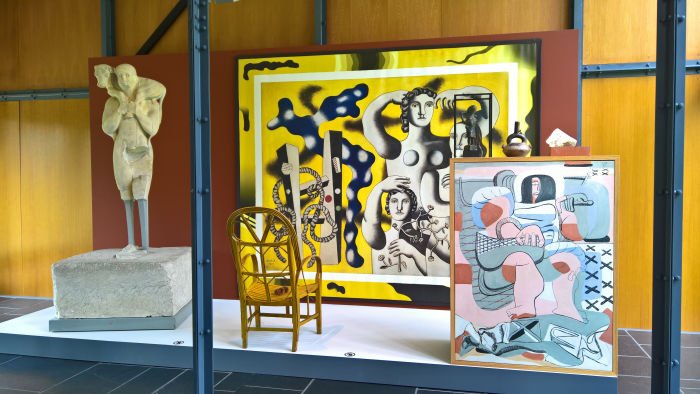
Le Corbusier wasn't, isn't, the only architect and/or designer who compulsively collects. Visit the atelier of any contemporary architect/designer and you'll invariably find all manner of disparate and random objects, man-made and natural artefacts which for one reason or another, often at that moment unknown, attracted the attention and demanded to be picked up and taken home. And through not only the objects themselves, but for all how the architect/designer responds to them, how they fit into the architect/designers life and where, and how, one finds their reflection in the architect/designer's work, such collections can help us approach a better understanding of that architect/designer.
Which brings us back to the question Julian Barnes’ narrator poses in Flaubert’s Parrot: why do we need to know about artists' backgrounds? Is their work not enough?
On the one hand yes, but on the other no; because understanding a work, and thereby the relevance of, the proposition inherent in, a work involves being able to approach a realistic, probable, understanding of from where it arose, and that means being able to approach a realistic, probable, understanding of the work's creator, including the attitudes, predilections and motivations of the the work's creator. And while there are many, many ways to approach that understanding, the rocks, bottles and vases they collect and collected is a relatively unfiltered, unfalsifiable, palpable resource.
A bijou univers, if one every bit as expansive as the universe, Mon univers not only provides for a sprightly and at times illuminating tour through the Le Corbusier biography but is a tour which helps elucidate how otherwise mundane, uninteresting and easily ignored objects contributed to Le Corbusier's understanding of his work, and which for all allows one to move away from the all too serious, stern, saturnine image of Le Corbusier that tends to be propagated. And the understanding that Le Corbusier is more than his buildings. Even if his buildings are all Le Corbusier. Be they an Art Nouveau villa in the Jura Mountains, or a steel and glass pavillon on the edge of the Zürichhorn park.
Mon univers runs at Pavillon Le Corbusier, Höschgasse 8, 8008 Zürich until Sunday November 17th. Full details, can be found at https://pavillon-le-corbusier.ch
